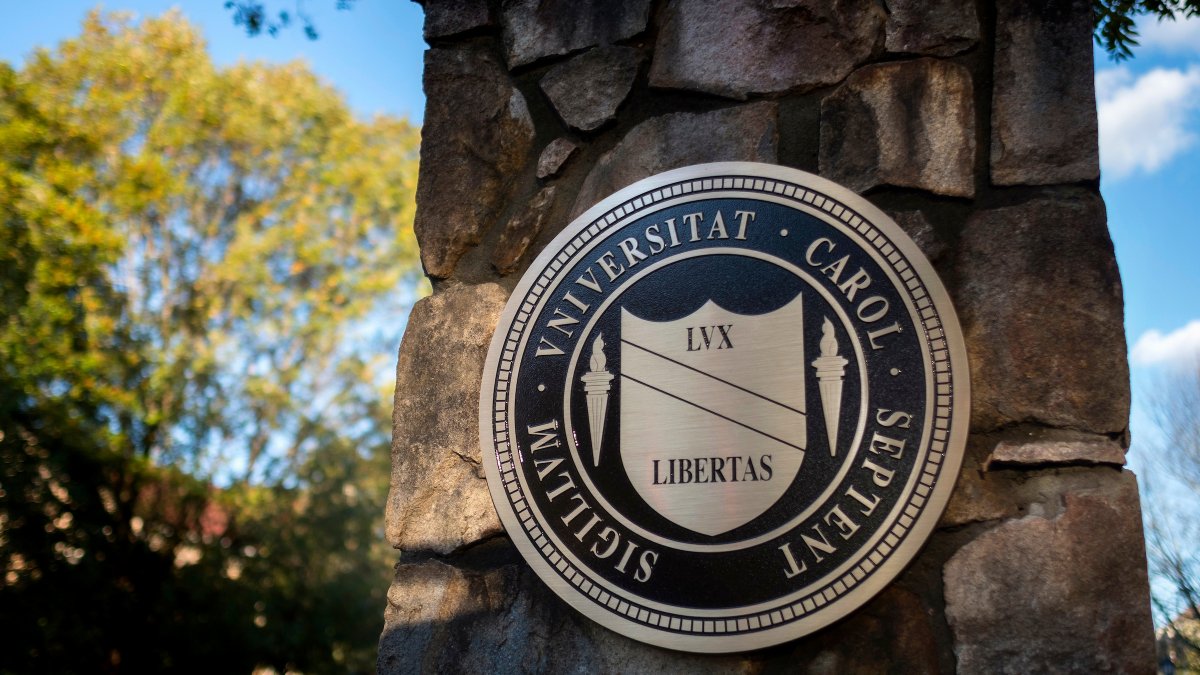In Survey, Faculty Express Concerns About Safety Amid Virus
Posted on June 16, 2020
Survey results pointed to concerns about whether faculty will be able to teach using methods that will keep them safe, about the degree of autonomy they will have in how they interact with their students and about the safety of graduate and professional students who interact with undergraduates through teaching. (File photo)
If a survey of faculty members’ anticipation of the fall semester could be summed up in one word, “uncertainty” would be a top candidate.
The survey was designed, sent to and returned by 1,224 faculty in less than three weeks, with a June 10 deadline for responding. Doubts about effective protection from the COVID-19 virus was one area discussed Monday during a review of the survey results in a meeting of the Faculty Executive Committee. When asked to indicate agreement or disagreement with a statement — “I believe the safety precautions that are planned for face-to-face teaching in the Fall of 2020 will reasonably protect me from getting COVID-19.” — 25 percent of the survey respondents said they agreed or strongly agreed; 34 percent said they were not sure; and 41 percent said they disagreed or strongly disagreed.
The results also pointed to concerns about whether faculty will be able to teach using methods that will keep them safe, about the degree of autonomy they will have in how they interact with their students and about the safety of graduate and professional students who interact with undergraduates through teaching.
Among faculty teaching just undergraduates, more than 50 percent disagreed or strongly disagreed that they were comfortable teaching on campus in the fall given the safety precautions that are described in Carolina’s recently released “Roadmap for Fall 2020.” (Since the original release of the roadmap, administrators have strengthened the language about wearing of masks, saying they will be required in classrooms and indoor common areas. Physical distancing of six feet or “three feet mask to mask” is recommended. Though UNC will have testing capability, there is not presently a plan to test everyone upon return.)
The predominant response to several key questions was “not sure.”
“There doesn’t seem to be enthusiasm for traditional classroom teaching,” said Mimi Chapman ’97 (PhD) at the meeting. Chapman, a professor of social work, is about to take over as chair of the faculty.
To the question on preferred teaching method, using four that UNC has laid out as options, 46 percent said they preferred no face-to-face classroom interaction. Twenty-nine percent preferred some in-classroom and some of the remote teaching that dominated the second half of the spring semester, 11 percent favored “traditional classroom instruction” and 8 percent said they preferred different methods for different types of classes.
The survey was the second official show of concern from the faculty since the reopening plan was released in late May. More than 650 faculty signed a petition demanding that no instructor be required to teach in person and that no instructor be required to disclose personal health concerns, that all members of the campus community be required to wear masks and practice physical distancing in classrooms and public settings, and that UNC test all staff, students and faculty on campus for the virus upon their return to campus and develop a rigorous plan that requires regular and ongoing testing.
The roadmap outlines four teaching methods and states that “decisions about which methods will be used for specific classes will be made locally by deans and department chairs, with input from the respective faculty members regarding how to create the right balance of course offerings using these different instructional delivery models.”
It describes courses for on-campus, in-person learners only; a “hyflex” scenario in which courses meet in-person and include some students joining remotely and synchronously, with recording for asynchronous learners; courses with a small, required synchronous recitation for which, where there are multiple recitation sections, there will be a mix of face-to-face and remote engagements; and courses taught online only.
Chancellor Kevin Guskiewicz and Provost Robert Blouin told the committee that extensive safety measures would be in place in classrooms and offices and that there would be a degree of flexibility in teaching methods. Where individual faculty refusal to come to the campus is concerned, UNC professors point to Duke University, which has granted that option; UNC has not.
The survey showed a high degree of confidence among respondents — with 66 percent agreeing or strongly agreeing — that faculty could negotiate with their chairs, department heads and deans to make decisions about research, teaching and service obligations.
Forty-five percent agreed or strongly agreed that they would be able to choose the teaching methods that are most pedagogically sound for their courses; 33 percent were not sure.
Where teachers over age 60 are concerned, more than 80 percent were either not sure or disagreed that planned safety precautions would protect them. Twenty-five percent of that group said there was no information they could be given that would allow them to feel safe teaching on campus this fall.
Members of the committee agreed that they want more information from campus infectious disease experts. They also would like to see surveys of students’ attitudes and concerns. One theme of the discussion was concern about whether students would comply effectively with behaviors — considered pivotal by the health experts — such as distancing and wearing masks.
“A lot is riding on how the students interpret this information and what they decide to do,” Chapman said.
